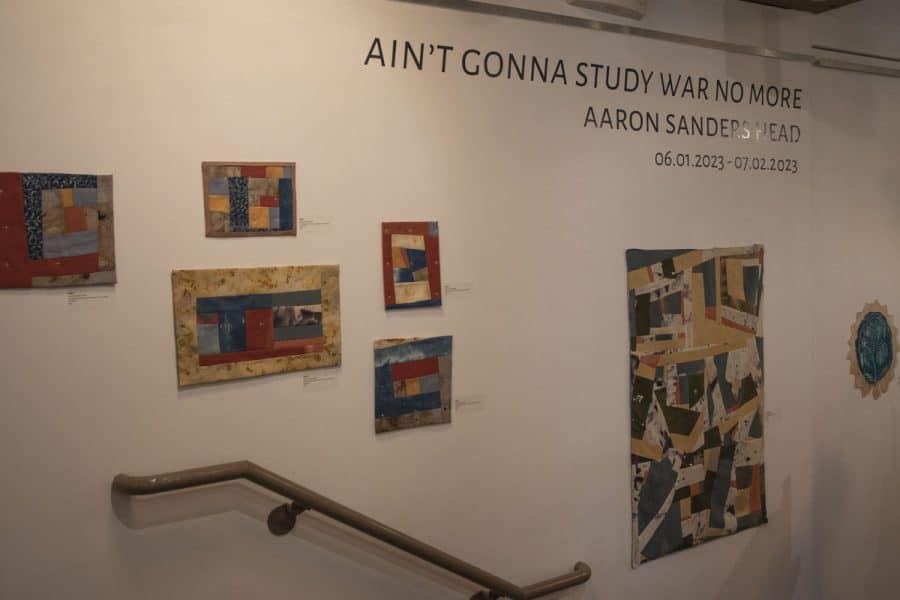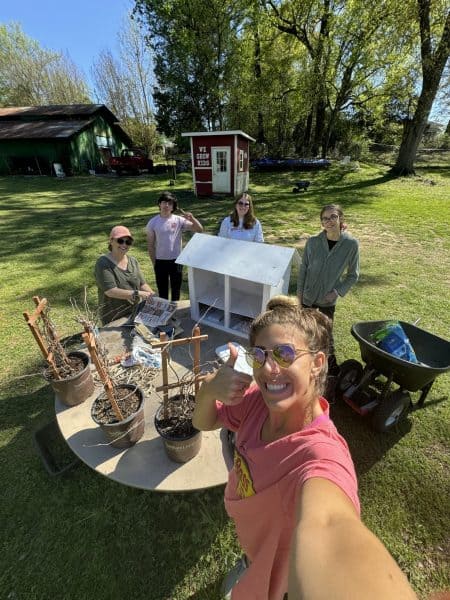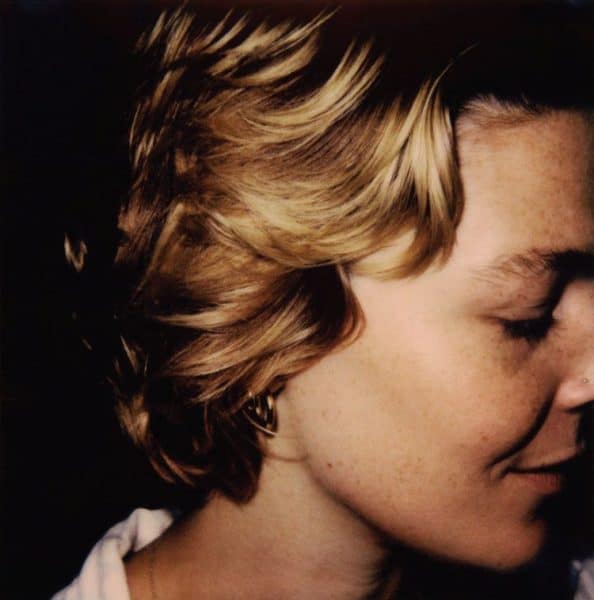Aaron Sanders Head’s ‘Ain’t Gonna Study War No More’ art exhibit opens at Kentuck Art Center
Art pieces from Aaron Sanders Head’s “Ain’t Gonna Study War No More” gallery show feature at the Kentuck Art Center in Northport, Ala.
June 7, 2023
On June 1, Kentuck Art Center opened the “Ain’t Gonna Study War No More” exhibition, featuring artist Aaron Sanders Head’s naturally dyed quilt and textile pieces, which will be on display until July 2.
The exhibit opened during Kentuck’s latest Art Night, a monthly event held on the first Thursday of each month from 5-8 p.m. in downtown Northport. Art Night usually consists of the opening of a new exhibit, artist and vendor pop-up shops, and live music.
The exhibition opening also included an artist talk with Head, whose work is being featured at Kentuck for the first time. Head, a self-described textile artist, said he grows the plants he uses to create his dyes in his current hometown of Greensboro, Alabama.
“I used a lot of natural, plant-based dyes, so all the colors that you see here are from plants. I grow things like indigo to make the blue color and marigold to make yellow,” Head said. His hand-stitched quilts and panels work together with the natural dyes to convey and celebrate the story of rural Alabama.
The artist said his “Ain’t Gonna Study War No More” exhibit was inspired by the old African American spiritual song “Down by the Riverside,” which has come to be known by the same title as the exhibit.
In the 1920s, the song was first recorded by the Fisk Jubilee Singers and evolved into an anti-war protest song during the Vietnam War. Conveying that same theme of peace from the song was important to Head in this exhibit.
“I use a lot of stuff like mending, patchwork and ways of fixing in my artwork. I want to sort of think about mending conflict and mending riffs in my life but also in my work,” Head said.
After previously working at Kentuck nearly a decade ago, Head said it was nice to be invited back to showcase his work at the gallery.
Head said he was exposed to textile work as a child by his mother and grandmother who were quilt-makers. This exposure ultimately inspired his artwork. Head hopes his audiences appreciate the value of nature and the plant-based dyes used in his works.
“I think it’s cool when they learn you can make a lot of natural dyes from plants. It really makes you look at your surroundings differently,” Head said.
Joely Goss, a senior majoring in environmental science, visited the exhibit’s opening and said she enjoys attending events hosted by the Kentuck Art Center.
Goss said she attended the opening at the Art Night after a friend recommended the event to her.
“I really enjoy Tuscaloosa’s efforts to incorporate the people and arts to have these events,” Goss said.
Goss said she has been learning how to quilt, so she enjoyed learning more about the quilt-making process and was inspired to continue to quilt after visiting the exhibit.
“I like the color choices and the individuality of each piece, but they all go together cohesively,” Goss said.
Amy Echols, Kentuck’s executive director, said Head was presented as a regional artist being considered for exhibition by program director Mary Bell.
“We look at that presentation and look at what our goals are for the year in our exhibits and see if it’s a good fit,” Echols said. “Some of us had seen his exhibits at Lowe Mill, which is in Huntsville, and we were familiar with his work.”
Echols said colleagues’ familiarity with Head’s work as an artist sparked agreement for him to be invited to be showcased at Kentuck. Exa Skinner, deputy director at Kentuck, said the staff thought Head’s work fit well with the center’s theme this year, “The Ties That Bind,” which explores how artists focus on the natural world.
Skinner said Head fit well with the theme since he grows his plants in his own backyard to be made into dyes for his artwork. She said all the plants he uses are native to Alabama, except the indigo he grows.
Head is not only able to connect with and showcase his environment through his textile work; Skinner said he is also able to make art from abandoned materials people leave him.
“All of the fabric he uses is repurposed fabric, so it’s things that have just been discarded by other people,” Skinner said.
Kentuck Art Center tends to offer audiences much more than conventional art spaces, Skinner said.
“I think Kentuck is a really unique place in that it’s a little more open than a traditional museum setting would be. We have the artists here and you have the opportunity to talk with them. It’s kind of a more laid-back atmosphere,” Skinner said. “I think that really helps people, even if they don’t have a background in art, understand what’s going on with art and also enjoy it.”
She added that Head is also being featured in Kentuck’s Hotel Indigo gallery in downtown Tuscaloosa and will be at the upcoming Kentuck Festival in October as a demonstrating artist.











